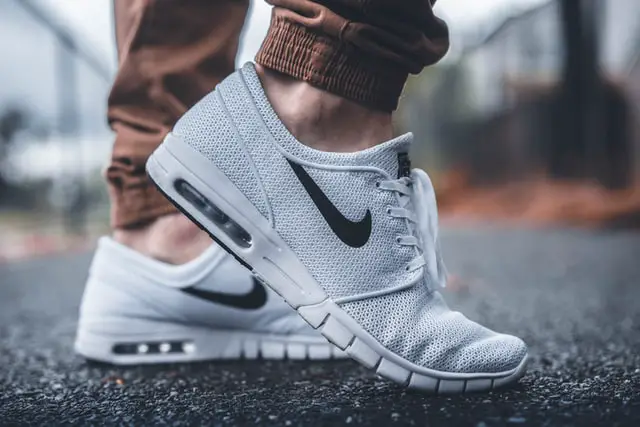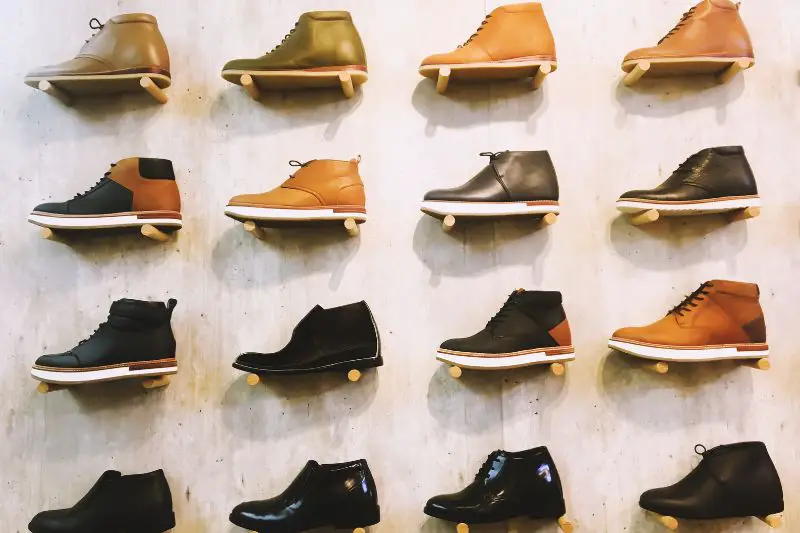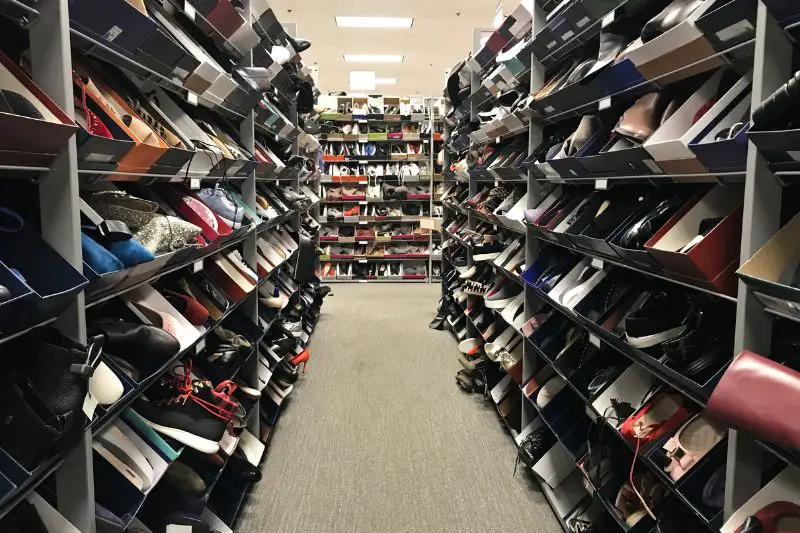
For an everyday, ubiquitous product like shoes, you may think that the target market includes “everyone”. While to an extent this is true, when designing a marketing strategy to make or sell shoes, segmenting the target market for shoes into addressable smaller markets is a necessity.
To segment the market for shoes, it is then essential to understand the types of shoe products that consumers buy and equally important to understand why they buy these products.
Whether you are considering starting a shoe store or adding a shoe section to an existing store – say a sports store – or you are thinking of starting your own shoe line, you will need to decide who your ideal customers are, what products to make or carry, and how to craft marketing messages to bring your ideal customers to your store and make a purchase.
In this article, we will look at the main categories of shoe products that exist, the different types of consumer categories that buy shoes, and the main motivating factors that drive their purchase decisions.
Target Market for Shoes: Shoes based on Type and Function

While there are hundreds of different types of shoes available on the market, we can broadly classify them based on their type and what they are used for (ie their function) into the following categories:
- Walking shoes
- Running shoes
- Trekking shoes
- Hiking shoes
- Dress shoes
- Casual shoes
- Athletic shoes
- Children’s shoes
- Custom-made shoes
- Homewear shoes
- Boots – Hiking boots, Gum boots, Riding, boots, etc.
- Sneakers
- Clogs
- Moccasins
The list goes on and on. If the above list isn’t enough and you would like a more comprehensive list, please see the links in the section ‘Further Reading’ at the end of this article.
As you can see the type of shoe and the function for which it is made often go hand in hand. Of course, sometimes we see cross-functional use of shoes. Running shoes can be used for walking. Casual shoes can be used on a sailboat during sailing.
Target Market for Shoes: Shoes based on Type of Customer

Customers for shoes can be classified based on many factors: Male/Female, Income/Willingness to Spend, Fashion/Style, etc.
Using these factors we can segment customers in the target market for shoes into the following broad categories.
- Men / Women
- Business professionals
- Fashionistas
- Serious Athletes
- Beginner / Casual Athletes
- Casual Walkers
- Parents buying for children
- Older people
Important: Note that the same individual could easily fall into multiple categories but from a marketing standpoint, we would need to consider them as different customers in different segments.
For instance, a 40-year old man may be an athlete and a banker. As an athlete, he is a target customer for running or athletic shoes. But as a banker, he may be a target customer for formal, dress shoes. His decision-making processes will be different in each case and so he would need to be considered as two separate people targeted with separate marketing messages.
With that said, let’s look closely at each of these market segments.
Men / Women
Men and women look for different things in their shoes. Traditionally, men have been considered the target market for shoes that are sturdy and functional – such as hiking boots or running shoes. These shoes are meant to do a specific job – like support their feet when they are active or keep them dry in wet weather.
On the other hand, women have generally been considered the target market for dress shoes and other shoes that are meant to enhance their appearance. While there is some overlap, generally speaking men and women look for different things in shoes.
Business professionals
When it comes to business attire, a man’s shoes say a lot about him – as does the woman’s choice of shoes. A pair of good-quality dress shoes sends a message of professionalism, power and trustworthiness. Dress shoes are an important part of a businessperson’s wardrobe and are often seen as a status symbol.
Fashionistas
Fashionistas are always looking for the latest style of shoe to add to their collection. They may be willing to spend a lot of money on designer shoes that are “in style” at the moment. For fashionistas, shoes are not just a way to get from point A to point B – they are a way to express their personal style and taste.
Serious Athletes
Serious athletes need shoes that will help them perform at their best. They are often willing to spend more money on shoes that will give them an edge over their competition. Athletic shoes are a big business and companies spend millions of dollars each year researching the latest technology to put into their shoes.
Beginner / Casual Athletes
Casual athletes are people who like to be active but don’t consider themselves serious athletes. They may jog or walk for exercise but they are not into marathons or triathlons. For the beginner or casual athlete, shoes need to be comfortable and provide good support. They don’t need to be fancy or expensive – just functional.
Casual Walkers
Casual walkers are people who enjoy a leisurely stroll in their free time. They are not interested in running or other strenuous activities. For casual walkers, shoes need to be comfortable and provide good support. They don’t need to be fancy or expensive – just functional.
Parents buying for their children
When it comes to choosing shoes for their children, parents have different priorities than the average shoe buyer. They are often looking for shoes that are durable and can handle wear and tear.
They also want shoes that are comfortable and safe for their children to wear. Also, children outgrow their shoes very quickly. So parents with multiple kids will often buy shoes that last longer so that they can be handed down from one sibling to the next.
Older people
As we get older, our feet change and we may need different types of shoes to support our feet. Older people may also have health conditions that affect their feet – such as diabetes or arthritis. For older people, shoes need to be comfortable and supportive. They may also want shoes that are stylish and look good with their clothes.
Target Market for Shoes: Factors affecting Purchase Decisions

The factors that affect the purchase decision of shoes are not much different than those that affect the purchase decisions of other similar products. However, the weight that each factor has varies based on the type of shoe being purchased and the type of individual making the purchase.
For instance, someone will think carefully about spending a lot of money on an expensive pair of Italian leather dress shoes. But the same individual may not think twice about buying a less expensive pair of walking shoes.
So let’s look at the important factors that people consider when buying a pair of shoes:
- Functionality
- Occasion
- Price
- Comfort
- Fashion/Style/Appearance
- Durability/Sturdiness
Functionality
Functionality is by far the most important factor people consider when buying shoes. Shoes need to do what they are intended for. Running shoes have to be good for running. Dress shoes have to be comfortable yet attractive looking.
If a pair of shoes doesn’t satisfy the basic function for which they are made, it is unlikely that they will be sold often.
Occasion
Some people will buy shoes for a special occasion, such as a wedding or a job interview. They want shoes that are both stylish and appropriate for the occasion. Some people will buy shoes specifically for a dress party. For instance, some people like to dress in vintage clothes and they will buy shoes that fit their clothing style.
Price
Price is always a factor in purchase decisions, but it is not always the most important one. People are willing to spend more money on shoes that are durable, comfortable, or stylish. But they are also willing to buy less expensive shoes if they are only going to be worn for a short time or for a specific purpose.
You could consider using price segmentation to offer high-end, expensive shoes to the more affluent segment of the market you decide to target.
Comfort
Comfort is a critical consideration for many people when buying shoes. No one likes to have shoes that are uncomfortable. They want shoes that fit well and feel good on their feet. Some people are willing to sacrifice style for comfort, while others will want both and will pay more for it.
Fashion/Style/Appearance
For some people, fashion is the most important factor when choosing shoes. They want shoes that look good and match their clothing style. These people are often willing to spend more money on a pair of shoes to get the style they want.
Durability/Sturdiness
People also consider the durability of a pair of shoes when making a purchase decision. They want shoes that will last for a long time and that won’t fall apart after just one or two uses. Shoes that are durable and sturdy tend to be more expensive, but people are often willing to pay more for them. Durability is a benefit that a segment of your market will appreciate. Use benefit segmentation techniques to market to this audience.
Summary
So, who is the target market for shoes? As you can see, there are a variety of different types of people who buy different types of shoes for different reasons. Each group has its own unique needs and considerations when it comes to making a purchase decision.
Some people buy shoes for their functionality, others buy them for their style, and still others buy them for their durability. It is important to understand your target market and what factors are most important to them when making a purchase decision. Once you know this, you can create marketing messages that appeal to their needs and wants.
If you can do this, you’ll be well on your way to creating a successful shoe business!
Thanks for reading. We hope this article was helpful!
Further Reading
- Thread Curve – A long list of shoes and footwear
- Italian Shoe Factory – How shoes are made
